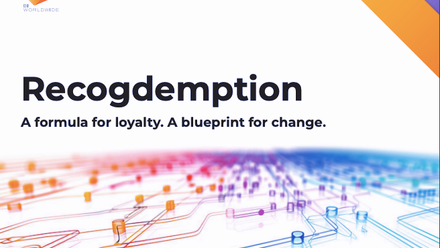Embracing pay transparency: Top tips to prepare your organisation
Let's talk pay transparency – this is about creating visibility of your salary and compensation practices and being clear and open about how pay decisions are made within your organisation.
Lack of pay transparency has been identified as one of the key obstacles to closing the gender pay gap, with women earning on average 13% less than men per hour in the EU.
Longer-term, the pay gap has an impact on the quality of women’s lives, on their risk of exposure to poverty and on the persisting gender pension gap, which is 35.7% in the EU.
Gender pay transparency was included as a key priority in the EU gender equality strategy 2020-2025. The introduction of the EU Pay Transparency Directive is intended to strengthen equal pay for equal work by enabling employees to detect and challenge possible discrimination, ultimately helping to close the gender pay gap across the EU. EU countries have up to three years to 'transpose' the directive by adapting national legislation to take account of the new rules.
Getting ready for EU Pay Transparency
Your HR team has a readiness role to play – ensuring that reward systems are critically assessed and revamped to get ready for EU Pay Transparency.
Your organisation must have systems that report accurately, cut down on human error, and boost team efficiency. This is to help your organisation navigate significant changes across policies, systems and wider corporate culture.
The directive sets out a wider definition of pay from current UK gender pay requirements – now to include base salary and any other consideration, whether in cash or in kind, which a worker receives directly or indirectly (complementary or variable components) in respect of their employment. This means the scope broadens to include benefits and pensions.
Even if your organisation is UK-based and has no employee cohorts in Europe, with many of your competitors voluntarily adopting similar standards to uphold their reputation, you may wish to manage your reputational risk on a similar basis.
With workers’ rights extending to requesting and receiving data about their individual role and how it compares to others in similar roles, you need to ensure all requests can be fulfilled easily by your systems and in a timely manner. Employees will have access to a lot more information about all elements of reward –access to this data will arm employees with greater bargaining tools to reduce the gender pay gap, country by country.
Here’s what we recommend:
1. Internal check: Review your pay structures by role and grade – are they sufficiently robust to facilitate the evaluation of whether employees are in a similar position concerning the value of their work, using objective, gender-neutral criteria such as skills, responsibility, effort, working conditions, and other factors pertinent to the role itself? Do you need to review job title alignment? Do roles operating at the same level require similar skills, effort, and responsibilities? If not, it's time to rethink those groups and make appropriate adjustments.
2. External check: Compare your salary ranges with competitors to stay in line with market standards.
3. Pay equity audit: Undertake a pay equity audit to identify any potential pay gaps and dig into them. Are they justified by non-discriminatory factors like experience or performance?
4. Fix unjustified gaps: Ensure all pay gaps that cannot be justified are corrected.
5. On-demand info: Design an on-demand response to employee requests for information.
6. Pressure-test culture: What cultural adjustments are needed along the way to empower managers to better support employee conversations? How strong is the change leadership capability of our people managers? What is our communication and engagement plan to successfully execute the organisational transformation as part of this journey?
7. Policy and procedure review: Apply a critical lens to your recruitment strategy, along with associated policies and procedures together with employee contracts to ensure they support broader pay transparency across your organisation.
We can help you accelerate your organisation’s readiness for pay transparency requirements in member states, voluntarily adopting similar standards so that you:
- Future-proof your leadership capabilities, so they have the right tools to be agents of change
- Promote fairness and inclusion to support your wider DEI strategy
- Drive transformation by activating the people side of change, delivering end-to-end change management which pivots your culture and behaviours to mitigate resistance
- Build employee engagement and loyalty, where your employees are more empowered
- Strengthen your employee value proposition, so that employees better understand your reward strategy and philosophy
- Proactively manage and narrow current pay gaps over time whilst ensuring your pay is competitive and market aligned.
Get your journey started today - contact us to learn more.
Supplied by REBA Associate Member, Gallagher
Gallagher is a global, integrated HR consulting, benefits administration & technology services provider.








